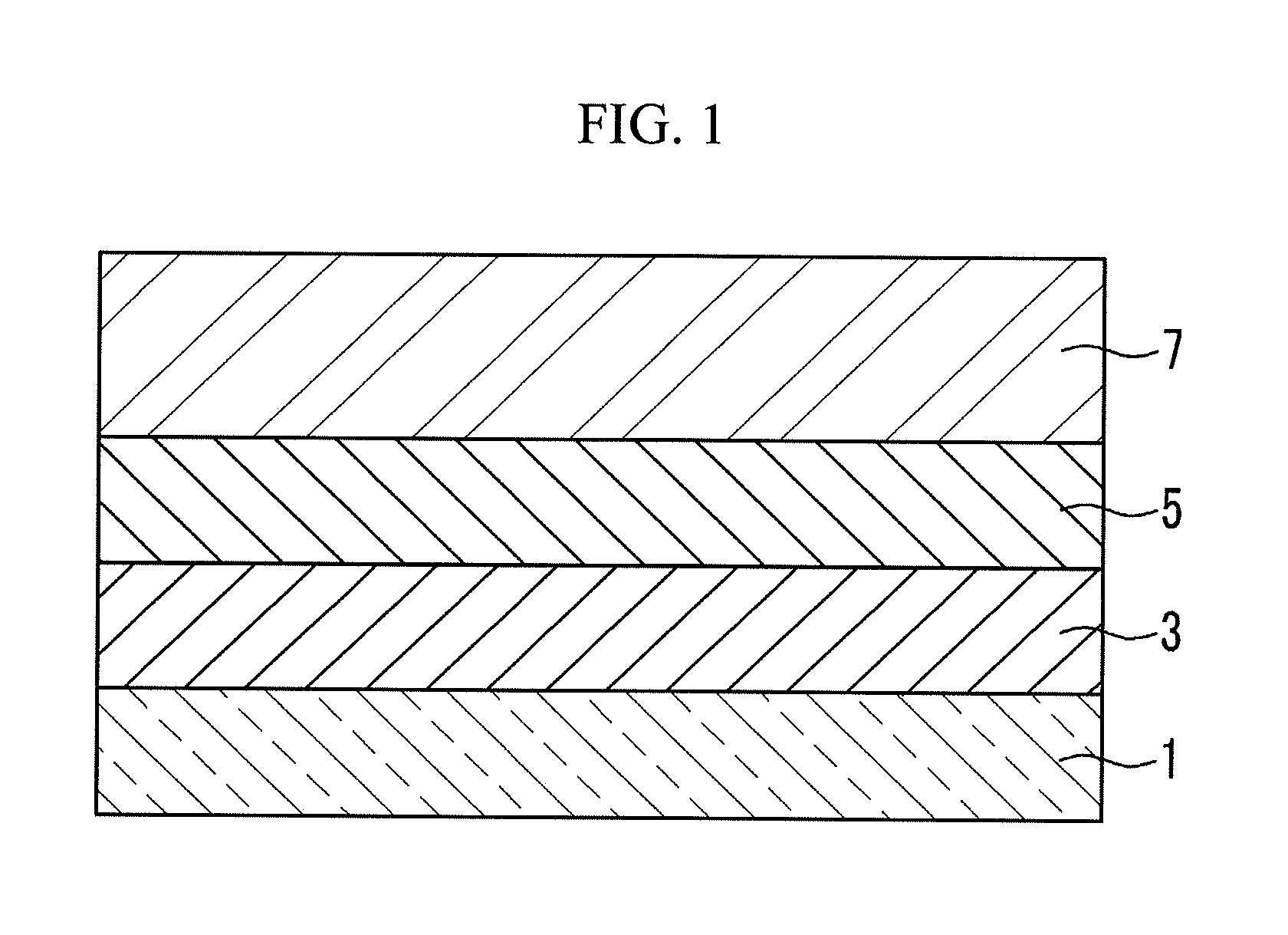Resist underlayer composition and process of producing integrated circuit devices using the same
a technology of resisting underlayer and integrated circuit, which is applied in the direction of instruments, photomechanical devices, coatings, etc., can solve the problem that the etch selectivity of the anti-reflective coating material is relatively poor
- Summary
- Abstract
- Description
- Claims
- Application Information
AI Technical Summary
Benefits of technology
Problems solved by technology
Method used
Image
Examples
example 1
[0056]37 g of methyltrimethoxysilane, 13.4 g of phenyltrimethoxysilane, and 110 g of hexaethoxydisilane were put into a 1 L 4-neck flask including a mechanical agitator, a condenser, a dropping funnel, and a nitrogen gas injection tube and dissolved in 320 g of PGMEA (propylene glycol monomethyl ether acetate), and then 38 g of 0.5% nitric acid aqueous solution was added thereto. Then, the resultant was reacted for one hour and applied with a negative pressure to remove methanol and ethanol produced therein. Subsequently, the solution was reacted at about 50° C. for two days. After the reaction, 98 g of PGMEA was added into 2 g of the obtained organosilane condensation polymerization product solution (weight average molecular weight=5,000) to prepare a diluted solution.
[0057]0.004 g of pyridinium p-toluene sulfonate was added to the diluted solution to thereby prepare a resist underlayer composition.
[0058]The resist underlayer composition was applied to a silicon wafer through a spi...
example 2
[0059]37 g of methyltrimethoxysilane, 13.4 g of phenyltrimethoxysilane, and 110 g of hexaethoxydisilane were put into a 1 L 4-neck flask including a mechanical agitator, a condenser, a dropping funnel, and a nitrogen gas injection tube and dissolved in 320 g of PGMEA (propylene glycol monomethyl ether acetate), and then 76 g of 0.5% nitric acid aqueous solution was added thereto. Then, the resultant was reacted for one hour and applied with a negative pressure to remove methanol and ethanol produced therein. Subsequently, the solution was reacted at about 50° C. for two days. After the reaction, 98 g of PGMEA was added into 2 g of the obtained organosilane condensation polymerization product solution (weight average molecular weight=10,000) to prepare a diluted solution.
[0060]0.004 g of pyridinium p-toluene sulfonate was added to the diluted solution to thereby prepare a resist underlayer composition.
[0061]The resist underlayer composition was applied to a silicon wafer through a sp...
example 3
[0062]37 g of methyltrimethoxysilane, 13.4 g of phenyltrimethoxysilane, and 110 g of hexaethoxydisilane were put into a 1 L 4-neck flask including a mechanical agitator, a condenser, a dropping funnel, and a nitrogen gas injection tube and dissolved in 320 g of PGMEA (propylene glycol monomethyl ether acetate), and then 137 g of 0.5% nitric acid aqueous solution was added thereto. Then, the resultant was reacted for one hour and applied with a negative pressure to remove methanol and ethanol produced therein. Subsequently, the solution was reacted at about 50° C. for two days. After the reaction, 98 g of PGMEA was added into 2 g of the obtained organosilane condensation polymerization product solution (weight average molecular weight=16,500) to prepare a diluted solution.
[0063]0.004 g of pyridinium p-toluene sulfonate was added to the diluted solution to thereby prepare a resist underlayer composition.
[0064]The resist underlayer composition was applied to a silicon wafer through a s...
PUM
| Property | Measurement | Unit |
|---|---|---|
| wavelength range | aaaaa | aaaaa |
| temperature | aaaaa | aaaaa |
| temperature | aaaaa | aaaaa |
Abstract
Description
Claims
Application Information
 Login to View More
Login to View More - R&D
- Intellectual Property
- Life Sciences
- Materials
- Tech Scout
- Unparalleled Data Quality
- Higher Quality Content
- 60% Fewer Hallucinations
Browse by: Latest US Patents, China's latest patents, Technical Efficacy Thesaurus, Application Domain, Technology Topic, Popular Technical Reports.
© 2025 PatSnap. All rights reserved.Legal|Privacy policy|Modern Slavery Act Transparency Statement|Sitemap|About US| Contact US: help@patsnap.com

